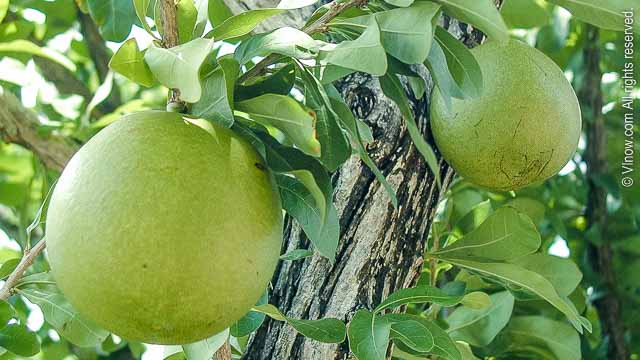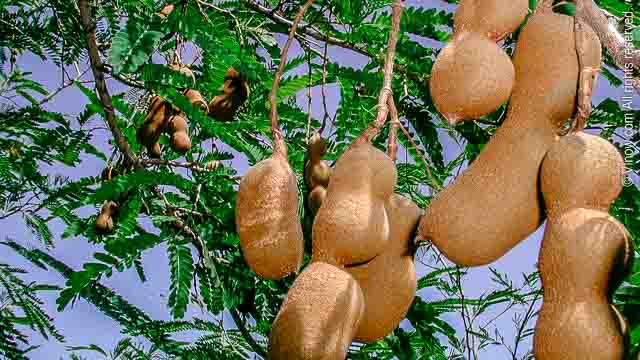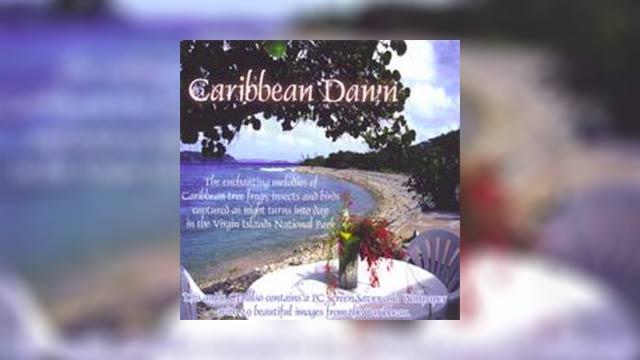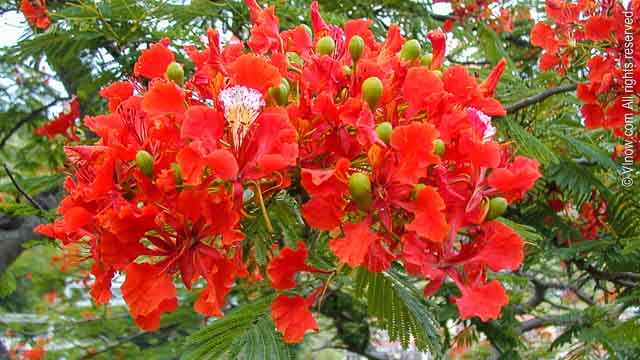If you have visited the U.S. Virgin Islands you may have heard or seen the word calabash. There are vacation rentals with calabash in the name, as well as a real estate agency. There is a neighborhood on St. John called Calabash Boom. There is reggae musician that grew up on St. Thomas that goes by the name Calabash. So, do you know what a calabash is? If no, here is a tip. In the Caribbean version of the popular holiday song ‘The Twelve Days of Christmas’ the first verse goes like this: “On the first day of Christmas my true love sent to me, A Trushie in a Calabash Tree.” Did the tip help? Sure it did — so a calabash is the (non-edible) fruit produced by a Calabash Tree.
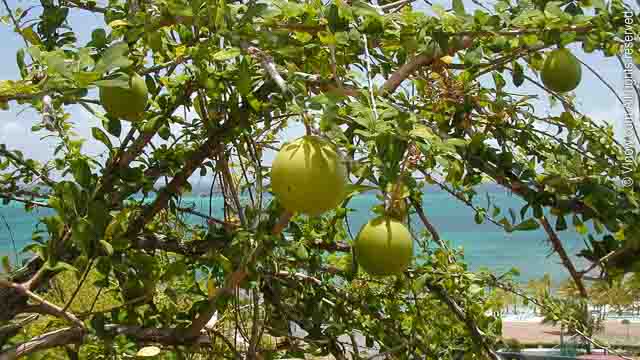
Calabash Trees grow wild around the U.S. Virgin Islands and in other equatorial areas of the world. Usually found in savannas where other plants might include wild tamarind, acacia and guinea grass. They are sometimes planted as ornamental trees in yards. The branches are long and spread outward with almost no secondary branches. The flowers are light green and pretty. The calabash is round and can be small or large, sometimes 10 inches in diameter and more. Inside the green fruit is a whitish pulp with brown seeds. The tree flowers and produces fruit throughout the year. The leaves, flowers and fruit grow directly from the trunk and limbs, not from the tips of branches as is the case with many other trees. Dozens of calabash might hang in a tree for up to seven months before turning a yellowish color and falling to the ground. The trees invite curiosity as the branches, flowers and fruits are exotically different than other trees.
It is not the interesting characteristics of the tree however that makes it so special to people in the U.S. Virgin Islands and in other areas of the world. It is the utilitarian function of the calabash itself. The calabash is gourdlike, with a hard exterior and soft interior. Hollowed out the fruit were used in the past to make spoons, bowls, ladles, cups and containers to hold liquid or grain. Large calabashes were used to make a bucket of sorts for bailing water from larger holding areas and from boats. These calabash bowls and containers were durable, lasting 20-30 years with good care and cleaning. This important use continues today primarily by people who seek a naturalistic lifestyle, preferring natural items to modern utensils. They are also made and kept as home decorations and as a reminder of a past way of life. The calabash bowls and utensils were usually left plain but were sometimes decorated. Today calabashes used in art has surpassed the calabash as a utensil. The calabash is transformed into ornate containers, purses and wall art.
To make a bowl or a purse from a calabash, the calabash must first be prepared. This requires cutting the calabash and scraping out the internal contents. The calabash must be cleaned; this involves soaking and scrubbing the shell. The calabash is set out to dry so that the shell is dried out completely. Once dried out the shell has a wooden appearance. After the calabash is dried and cleaned it can be fashioned into the utilitarian bowls and cups of the past or the decorative containers and purses of the present.
Artwork, containers and purses made of calabash can usually be found at arts and crafts fairs that take place at various times throughout the year on St. Croix, St. Thomas and St. John. It is also possible to find them in some gift and souvenir shops, including art galleries.

